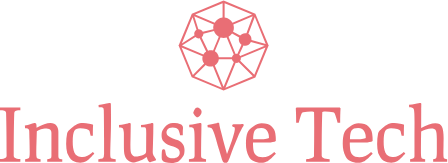In today’s digitally connected world, access to technology has become synonymous with access to opportunity. However, while technology has the power to transform lives and societies, not everyone has equal access to its benefits. This is where inclusive tech steps in, aiming to bridge the digital divides that exist within our communities and across the globe.
Understanding Digital Divides
Digital divides refer to the gaps that exist between those who have access to digital technologies and those who do not.
These disparities can be attributed to various factors, including socioeconomic status, geographical location, age, and physical abilities. In essence, digital divides exacerbate existing inequalities, making it difficult for marginalized groups to fully participate in the digital age.
Challenges Faced
The challenges faced by those on the wrong side of the digital divide are multifaceted. Accessibility issues, such as the lack of infrastructure in rural areas or the absence of assistive technologies for people with disabilities, hinder equitable access to technology.
Additionally, affordability concerns prevent many individuals and communities from purchasing necessary devices and internet services. Moreover, a lack of digital literacy further widens the gap, as individuals without the necessary skills struggle to utilize available technologies effectively.
Role of Inclusive Technology
Inclusive technology, also known as assistive technology, encompasses a wide range of tools and solutions designed to address the needs of diverse users.
These technologies aim to make digital experiences accessible to everyone, particularly individuals with disabilities and other marginalized groups. By prioritizing usability and inclusivity in design, inclusive tech empowers individuals to participate fully in the digital world.
Examples of Inclusive Technology Solutions:
- Screen Readers: Screen readers are software programs that convert text on a screen into synthesized speech or braille output, allowing visually impaired individuals to access digital content such as websites, documents, and applications.
- Speech Recognition Software: Speech recognition software enables users to control computers and mobile devices using voice commands. This technology is particularly beneficial for individuals with mobility impairments who may have difficulty using traditional input devices.
- Alternative Input Devices: Alternative input devices, such as switches, joysticks, and head pointers, provide individuals with physical disabilities alternative means of interacting with computers and other electronic devices.
- Language Translation Apps: Language translation apps facilitate communication for non-native speakers by translating spoken or written text into different languages in real-time. This technology promotes inclusivity by removing language barriers in digital communication.
Impact of Inclusive Tech
The impact of inclusive technology extends far beyond mere accessibility. By breaking down barriers to digital participation, inclusive tech promotes social inclusion and diversity, fostering a more equitable society.
Furthermore, by enabling individuals to access education, employment, and healthcare services online, inclusive tech opens up new opportunities for economic empowerment and personal growth.
Benefits of Inclusive Technology:
- Social Inclusion: Inclusive technology enables individuals with disabilities to participate more fully in social activities, such as communication, entertainment, and online communities. This fosters a sense of belonging and reduces social isolation.
- Diversity Promotion: By accommodating diverse needs and preferences, inclusive tech promotes diversity in digital spaces. This helps create more inclusive environments where individuals from different backgrounds can engage and collaborate effectively.
- Equitable Access to Education: Inclusive technology ensures that all students, regardless of their abilities, have equal access to educational resources and opportunities. This fosters inclusive learning environments and supports academic success for students with disabilities.
- Employment Opportunities: Access to inclusive technology enables individuals with disabilities to participate in the workforce more effectively. By providing accommodations and support, inclusive tech helps individuals secure employment and advance their careers.
- Healthcare Access: Inclusive technology facilitates access to healthcare services, such as telemedicine and digital health monitoring tools. This allows individuals to manage their health more effectively and receive timely medical care, regardless of their location or physical abilities.
Government Initiatives and Policies
Governments play a crucial role in promoting digital inclusion through various initiatives and policies. From funding infrastructure projects to implementing digital literacy programs, governments can help ensure that all citizens have equal access to technology.
For example, countries like Finland and South Korea have implemented ambitious broadband expansion projects, significantly reducing the digital divide within their borders.
Corporate Social Responsibility
In addition to governmental efforts, corporations also have a responsibility to address digital inequalities. Many companies recognize the importance of inclusivity and are taking proactive steps to ensure that their products and services are accessible to diverse users. Corporate social responsibility (CSR) initiatives play a crucial role in promoting digital inclusion and bridging digital divides.
Examples of Corporate Social Responsibility Initiatives:
| Initiative | Description | Impact |
| Inclusive Design Principles | Many companies are incorporating inclusive design principles into their products and services. These principles prioritize accessibility and usability for diverse users, including individuals with disabilities. | By designing products and services with inclusivity in mind, corporations can ensure that they are accessible to a wider range of users, thereby promoting digital inclusion and diversity. |
| Digital Literacy Programs | Corporate social responsibility initiatives often include programs aimed at increasing digital literacy among underserved communities. These programs provide training and resources to help individuals develop essential digital skills. | By improving digital literacy, these programs empower individuals to fully participate in the digital economy and access online opportunities, contributing to greater socioeconomic equity. |
| Technology Access Programs | Some companies are implementing technology access programs to provide underserved communities with access to affordable or free devices and internet services. These programs help bridge the digital divide by ensuring that everyone has the necessary tools to access digital resources. | By providing technology access to underserved communities, corporations can help reduce barriers to digital participation and promote equal opportunities for all individuals. |
Corporate social responsibility initiatives demonstrate a commitment to promoting digital inclusion and addressing the digital divide. By leveraging their resources and influence, corporations can play a significant role in creating a more equitable and inclusive digital future for all.
Community Empowerment
At the grassroots level, communities are taking matters into their own hands by launching initiatives to promote digital inclusion. Whether through community centers offering free computer classes or local organizations providing refurbished devices to low-income families, these efforts play a vital role in bridging digital divides. By empowering individuals and fostering a sense of community ownership, these initiatives help ensure that no one is left behind in the digital age.
Overcoming Barriers
Addressing digital divides requires a collaborative effort involving various stakeholders, including governments, corporations, nonprofits, and local communities.
By working together to address infrastructure challenges, improve digital literacy, and promote inclusive design, we can create a more equitable and inclusive digital future for all.
Future Trends
Looking ahead, emerging technologies hold promise for furthering the cause of digital inclusion. From AI-powered accessibility features to decentralized internet networks, innovations in inclusive tech are poised to revolutionize the way we think about accessibility and inclusivity.
By embracing these technologies and continuing to prioritize inclusivity in design, we can build a future where everyone has equal access to the opportunities afforded by technology.
Ethical Considerations
As we strive to bridge digital divides, it’s essential to consider the ethical implications of our actions. Ensuring fairness and equity should be at the forefront of our efforts, as technology has the potential to either exacerbate or alleviate existing inequalities.
By adopting ethical guidelines and principles, we can ensure that our pursuit of digital inclusion is grounded in justice and compassion.
Global Perspective
Digital divides are not limited to any one country or region; they are a global phenomenon that requires global solutions. International efforts aimed at promoting digital inclusion, such as the United Nations’ Sustainable Development Goals, emphasize the importance of bridging divides on a global scale.
However, achieving meaningful progress requires addressing cross-cultural challenges and tailoring solutions to the unique needs of different communities.
Case Studies
Numerous success stories illustrate the transformative power of inclusive technology in bridging digital divides. These case studies highlight real-world examples of how inclusive tech has made a positive impact on individuals and communities worldwide. By learning from these experiences, we can gain valuable insights into best practices and replicate successful strategies in other contexts.
Examples of Case Studies:
- Deployment of Mobile Banking Services in Remote Areas of Africa:
- In many remote areas of Africa, access to traditional banking services is limited. However, mobile banking technology has emerged as a game-changer, allowing individuals to access financial services using their mobile phones. Companies like M-Pesa in Kenya have successfully implemented mobile banking platforms, enabling people in rural areas to conduct transactions, access loans, and manage their finances conveniently.
- Creation of Braille-Enabled E-Readers for Visually Impaired Individuals:
- Traditional print materials can pose significant barriers to individuals with visual impairments. However, advancements in technology have led to the development of braille-enabled e-readers, making digital content more accessible to visually impaired individuals. Companies like HumanWare have designed innovative e-reader devices that incorporate braille displays, allowing users to access a wide range of digital books and documents independently.
These case studies demonstrate how inclusive technology can address specific needs and empower individuals with disabilities and other marginalized groups. By leveraging innovative solutions and partnerships, organizations can overcome barriers to digital inclusion and create more equitable opportunities for all.
Measuring Success
Measuring the success of digital inclusion efforts requires the development of appropriate metrics and evaluation methodologies. Beyond simply tracking access rates or device ownership, we must consider factors such as digital literacy levels, usage patterns, and outcomes related to social and economic empowerment. By collecting and analyzing data effectively, we can assess the effectiveness of our interventions and identify areas for improvement.
Inclusive tech has the power to transform lives and societies by bridging digital divides and fostering greater equity and inclusion. By prioritizing accessibility, affordability, and digital literacy, we can ensure that everyone has equal access to the opportunities afforded by technology. As we continue to strive for a more inclusive digital future, let us remember that our collective efforts can make a meaningful difference in the lives of millions around the world.
FAQs (Frequently Asked Questions)
- What is inclusive technology?
- Inclusive technology refers to tools and solutions designed to make digital experiences accessible to diverse users, including those with disabilities or other marginalized groups.
- How does inclusive tech benefit society?
- Inclusive tech promotes social inclusion and diversity, fosters economic empowerment, and creates opportunities for personal growth and development.
- What role do governments play in promoting digital inclusion?
- Governments can support digital inclusion through initiatives such as funding infrastructure projects, implementing digital literacy programs, and enforcing policies that ensure equal access to technology.
- How can corporations contribute to bridging digital divides?
- Corporations can incorporate inclusive design principles into their products and services, support digital literacy initiatives, and invest in programs that provide technology access to underserved communities.
- What can individuals do to promote digital inclusion?
- Individuals can support digital inclusion efforts by advocating for equitable access to technology, volunteering with organizations that promote digital literacy, and participating in initiatives to bridge digital divides in their communities.

